We are a bunch of people who love astronomy, sci-fi and science. We want to share with you all some awesome information about these things; and maybe you'll fall in love with science too (if not already)!!
Don't wanna be here? Send us removal request.
Text
Love it when Rolling Stone puts out an article about the 25 most influential internet creators and I've only heard of 7 of them
63K notes
·
View notes
Text
Flying to New Heights With the Magnetospheric Multiscale Mission
A mission studying Earth’s magnetic field by flying four identical spacecraft is headed into new territory.

The Magnetospheric Multiscale mission, or MMS, has been studying the magnetic field on the side of Earth facing the sun, the day side – but now we’re focusing on something else. On February 9, MMS started the three-month-long process of shifting to a new orbit.

One key thing MMS studies is magnetic reconnection – a process that occurs when magnetic fields collide and re-align explosively into new positions. The new orbit will allow MMS to study reconnection on the night side of the Earth, farther from the sun.

Magnetic reconnection on the night side of Earth is thought to be responsible for causing the northern and southern lights.

To study the interesting regions of Earth’s magnetic field on the night side, the four MMS spacecraft are being boosted into an orbit that takes them farther from Earth than ever before. Once it reaches its final orbit, MMS will shatter its previous Guinness World Record for highest altitude fix of a GPS.
To save on fuel, the orbit is slowly adjusted over many weeks. The boost to take each spacecraft to its final orbit will happen during the first week of April.

On April 19, each spacecraft will be boosted again to raise its closest approach to Earth, called perigee. Without this step, the spacecraft would be way too close for comfort – and would actually reenter Earth’s atmosphere next winter!

The four MMS spacecraft usually fly really close together – only four miles between them – in a special pyramid formation called a tetrahedral, which allows us to examine the magnetic environment in three dimensions.

But during orbit adjustments, the pyramid shape is broken up to make sure the spacecraft have plenty of room to maneuver. Once MMS reaches its new orbit in May, the spacecraft will be realigned into their tetrahedral formation and ready to do more 3D magnetic science.

Learn more about MMS and find out what it’s like to fly a spacecraft.
1K notes
·
View notes
Text
13 Reasons to Have an Out of This World Friday (the 13th)
1. Know that not all of humanity is bound to the ground

Since 2000, the International Space Station has been continuously occupied by humans. There, crew members live and work while conducting important research that benefits life on Earth and will even help us eventually travel to deep space destinations, like Mars.
2. Smart people are up all night working in control rooms all over NASA to ensure that data keeps flowing from our satellites and spacecraft

Our satellites and spacecraft help scientists study Earth and space. Missions looking toward Earth provide information about clouds, oceans, land and ice. They also measure gases in the atmosphere, such as ozone and carbon dioxide, and the amount of energy that Earth absorbs and emits. And satellites monitor wildfires, volcanoes and their smoke.

Satellites and spacecraft that face toward space have a variety of jobs. Some watch for dangerous rays coming from the sun. Others explore asteroids and comets, the history of stars, and the origin of planets. Some fly near or orbit other planets. These spacecraft may look for evidence of water on Mars or capture close-up pictures of Saturn’s rings.
3. The spacecraft, rockets and systems developed to send astronauts to low-Earth orbit as part our Commercial Crew Program is also helping us get to Mars
Changes to the human body during long-duration spaceflight are significant challenges to solve ahead of a mission to Mars and back. The space station allows us to perform long duration missions without leaving Earth’s orbit.

Although they are orbiting Earth, space station astronauts spend months at a time in near-zero gravity, which allows scientists to study several physiological changes and test potential solutions. The more time they spend in space, the more helpful the station crew members can be to those on Earth assembling the plans to go to Mars.
4. Two new science missions will travel where no spacecraft has gone before…a Jupiter Trojan asteroid and a giant metal asteroid!

We’ve selected two missions that have the potential to open new windows on one of the earliest eras in the history of our solar system – a time less than 10 million years after the birth of our sun!

The first mission, Lucy, will visit six of Jupiter’s mysterious Trojan asteroids. The Trojans are thought to be relics of a much earlier era in the history of the solar system, and may have formed far beyond Jupiter’s current orbit.

The second mission, Psyche, will study a unique metal asteroid that’s never been visited before. This giant metal asteroid, known as 16 Psyche, is about three times farther away from the sun than is the Earth. Scientists wonder whether Psyche could be an exposed core of an early planet that could have been as large as Mars, but which lost its rocky outer layers due to a number of violent collisions billions of years ago.
5. Even astronauts eat their VEGGIES’s
NASA astronaut Shane Kimbrough collected the third and final harvest of the latest round of the Veggie investigation, testing the capability to grow fresh vegetables on the International Space Station.

Understanding how plants respond to microgravity is an important step for future long-duration space missions, which will require crew members to grow their own food. Crew members have previously grown lettuce and flowers in the Veggie facility. This new series of the study expands on previous validation tests.
6. When you feel far away from home, you can think of the New Horizons spacecraft as it heads toward the Kuiper Belt, and the Voyager spacecrafts are beyond the influence of our sun…billions of miles away

Our New Horizons spacecraft completed its Pluto flyby in July 2015 and has continued on its way toward the Kuiper Belt. The spacecraft continues to send back important data as it travels toward deeper space at more than 32,000 miles per hour, and is nearly 3.2 billion miles from Earth.

In addition to New Horizons, our twin Voyager 1 and 2 spacecraft are exploring where nothing from Earth has flown before. Continuing on their more-than-37-year journey since their 1977 launches, they are each much farther away from Earth and the sun than Pluto. In August 2012, Voyager 1 made the historic entry into interstellar space, the region between the stars, filled with material ejected by the death of nearby stars millions of years ago.
7. Earth has a magnetic field that largely protects it from the solar wind stripping away out atmosphere…unlike Mars

Findings from our MAVEN mission have identified the process that appears to have played a key role in the transition of the Martian climate from an early, warm and wet environment to the cold, arid planet Mars is today. MAVEN data have enabled researchers to determine the rate at which the Martian atmosphere currently is losing gas to space via stripping by the solar wind. Luckily, Earth has a magnetic field that largely protects it from this process.
8. There are humans brave enough to not only travel in space, but venture outside space station to perform important repairs and updates during spacewalks

Spacewalks are important events where crew members repair, maintain and upgrade parts of the International Space Station. These activities can also be referred to as EVAs – Extravehicular Activities. Not only do spacewalks require an enormous amount of work to prepare for, but they are physically demanding on the astronauts. They are working in the vacuum of space in only their spacewalking suit.

When on a spacewalk, astronauts use safety tethers to stay close to their spacecraft. One end of the tether is hooked to the spacewalker, while the other end is connected to the vehicle. Spacewalks typically last around 6.5 hours, but can be extended to 7 or 8 hours, if necessary.
9. We’re working to create new aircraft that will dramatically reduce fuel use, emissions and noise…meaning we could change the way you fly!

The nation’s airlines could realize more than $250 billion dollars in savings in the near future thanks to green-related technologies that we are developing and refining. These new technologies could cut airline fuel use in half, pollution by 75% and noise to nearly one-eighth of today’s levels!
10. You can see a global image of your home planet…EVERY DAY

Once a day, we will post at least a dozen new color images of Earth acquired from 12 to 36 hours earlier. These images are taken by our EPIC camera from one million miles away on the Deep Space Climate Observatory (DSCOVR). Take a look HERE.
11. Employees of NASA have always been a mission driven bunch, who try to find answers that were previously unknown
The film “Hidden Figures,” focuses on the stories of Katherine Johnson, Mary Jackson and Dorothy Vaughan, African-American women who were essential to the success of early spaceflight.
youtube
Today, we embrace their legacy and strive to include everyone who wants to participate in our ongoing exploration. In the 1960’s, we were on an ambitious journey to the moon, and the human computers portrayed in Hidden Figures helped get us there. Today, we are on an even more ambitious journey to Mars. We are building a vibrant, innovative workforce that reflects a vast diversity of discipline and thought, embracing and nurturing all the talent we have available, regardless of gender, race or other protected status. Take a look at our Modern Figures HERE.
12. A lot of NASA-developed tech has been transferred for use to the public
[VIDEO]
Our Technology Transfer Program highlights technologies that were originally designed for our mission needs, but have since been introduced to the public market. HERE are a few spinoff technologies that you might not know about.
13. If all else fails, here’s an image of what we (Earth) and the moon look like from Mars

From the most powerful telescope orbiting Mars comes a new view of Earth and its moon, showing continent-size detail on the planet and the relative size of the moon. The image combines two separate exposures taken on Nov. 20 by our High Resolution Imaging Science Experiment (HiRISE) camera on our Mars Reconnaissance Orbiter.
In the image, the reddish feature near the middle of the face of Earth is Australia.
Make sure to follow us on Tumblr for your regular dose of space: http://nasa.tumblr.com
1K notes
·
View notes
Text
Black (Hole) Friday!
It’s Black Friday, but for us, it’s the annual Black Hole Friday! Today, we’ll post awesome images and information about black holes.

A black hole is a place in space where gravity pulls so much that even light cannot get out. The gravity is so strong because matter has been squeezed into a tiny space…sort of like all of those shoppers trying to fit into the department stores today.
Because no light can get out, you can’t see black holes with the naked eye. Space telescopes with special tools help find black holes (sort of how those websites help you find shopping deals).

How big are black holes? Black holes can be large or small…just like the lines in all of the stores today. Scientists think the smallest black holes are as small as just one atom. These black holes are very tiny but have the mass of a large mountain!

So how do black holes form? Scientists think the smallest black holes formed when the universe began. Stellar black holes are made when the center of a very big star collapses. When this happens, it causes a supernova.

A supernova is an exploding star that blasts part of its mass into space.

Supermassive black holes are an altogether different story. Scientists think they were made at the same time as the galaxy they in they reside. Supermassive black holes, with their immense gravitational pull, are notoriously good at clearing out their immediate surroundings by eating nearby objects. When a star passes within a certain distance of a black hole, the stellar material gets stretched and compressed – or ��spaghettified” – as the black hole swallows it. A black hole destroying a star, an event astronomers call “stellar tidal disruption,” releases an enormous amount of energy, brightening the surroundings in an event called a flare. In recent years, a few dozen such flares have been discovered.

Then there are ultramassive black holes, which are found in galaxies at the centers of massive galaxy clusters containing huge amounts of hot gas.
Get more fun facts and information about black holes.
Follow us on social media.
Make sure to follow us on Tumblr for your regular dose of space: http://nasa.tumblr.com
2K notes
·
View notes
Text
10 Technologies That Are Changing the Game
Earlier this year, we hosted a Game Changing Technology Industry Day for the aerospace industry, and in October our engineers and technologists visited Capitol Hill showcasing some of these exciting innovations. Check out these technology developments that could soon be making waves on Earth and in space.
1. Wearable technology

With smartwatches, glasses, and headsets already captivating users around the world, it’s no surprise that the next evolution of wearable technology could be used by first responders at the scene of an accident or by soldiers on a battlefield. The Integrated Display and Environmental Awareness System (IDEAS) is an interactive optical computer that works for smart glasses.

It has a transparent display, so users have an unobstructed view even during video conferences or while visualizing environmental data.

And while the IDEAS prototype is an innovative solution to the challenges of in-space missions, it won’t just benefit astronauts – this technology can be applied to countless fields here on Earth.
2. Every breath they take: life support technologies
Before astronauts can venture to Mars and beyond, we need to significantly upgrade our life support systems. The Next Generation Life Support project is developing technologies to allow astronauts to safely carry out longer duration missions beyond low-Earth orbit.

The Variable Oxygen Regulator will improve the control of space suit pressure, with features for preventing decompression sickness. The Rapid Cycle Amine technology will remove carbon dioxide and humidity and greatly improve upon today’s current complex system.

3. 3-D printing (for more than just pizza)
New Advanced Manufacturing Technologies (AMT), such as 3-D printing, can help us build rocket parts more quickly and aid in building habitats on other planets.

These manufacturing initiatives will result in innovative, cost-efficient solutions to many of our planetary missions. Back in 2014, the International Space Station’s 3-D printer manufactured the first 3-D printed object in space, paving the way to future long-term space expeditions.

The object, a printhead faceplate, is engraved with names of the organizations that collaborated on this space station technology demonstration: NASA and Made In Space, Inc., the space manufacturing company that worked with us to design, build and test the 3-D printer.

4. Spacecraft landing gear
Large spacecraft entering the atmosphere of Mars will be traveling over five times the speed of sound, exposing the craft to extreme heat and drag forces. The Hypersonic Inflatable Aerodynamic Decelerator (HIAD) is designed to protect spacecraft from this environment with an inflatable structure that helps slow a craft for landing.
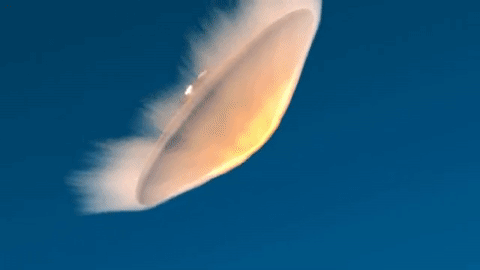
To get astronauts and other heavy loads to the surface safely, these components must be very strong. The inflatable consists of a material 15 times stronger than steel, while the thermal protection system can withstand temperatures over 1600°C.
5. From heat shield technology to firefighter shelters

For the Convective Heating Improvement for Emergency Fire Shelters (CHIEFS) project, we partnered with the U.S. Forest Service to develop safer, more effective emergency fire shelters for wild land firefighters.
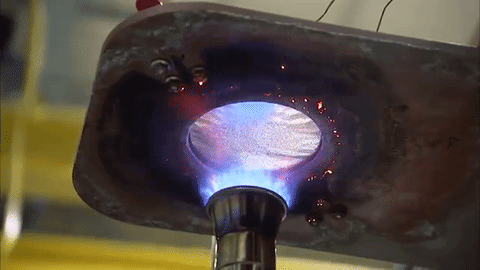
Using existing technology for flexible spacecraft heat shields like HIAD, we are building and testing new fire shelters composed of stacks of durable, insulated materials that could help protect the lives of firefighters.
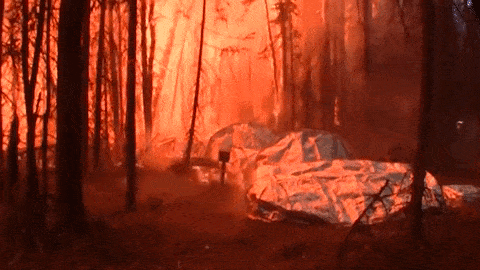
6. Robots and rovers
Real life is looking a bit more like science fiction as Human Robotics Systems are becoming highly complex. They are amplifying human productivity and reducing mission risk by improving the effectiveness of human-robot teams.

Our humanoid assistant Robonaut is currently aboard the International Space Station helping astronauts perform tasks.
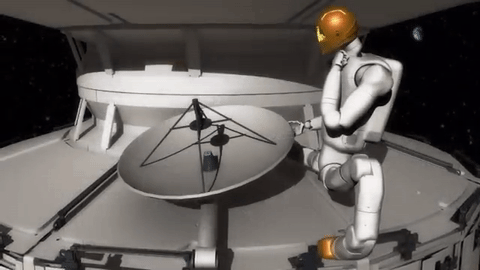
A fleet of robotic spacecraft and rovers already on and around Mars is dramatically increasing our knowledge and paving the way for future human explorers. The Mars Science Laboratory Curiosity rover measured radiation on the way to Mars and is sending back data from the surface.
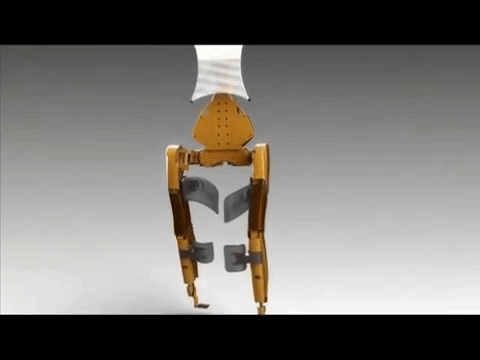
This data will help us plan how to protect the astronauts who will explore Mars.

Future missions like the Mars 2020 rover, seeking signs of past life, will demonstrate new technologies that could help astronauts survive on the Red Planet.

7. Robotic repairs
Currently, a satellite that is even partially damaged cannot be fixed in orbit. Instead, it must be disposed of, which is a lot of potential science lost.
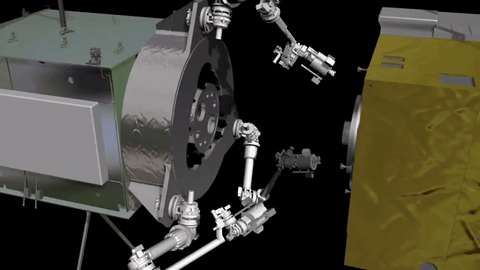
Satellite Servicing technologies would make it possible to repair, upgrade, and even assemble spacecraft in orbit using robotics.

This can extend the lifespan of a mission, and also enable deeper space exploration.

Restore-L, set to launch in 2020, is a mission that will demonstrate the ability to grab and refuel a satellite.
8. Low-cost spacecraft avionics controllers
Small satellites, or smallsats, are quickly becoming useful tools for both scientists and industry. However, the high cost of spacecraft avionics—the systems that guide and control the craft—often limits how and when smallsats can be sent into orbit by tagging along as payloads on larger launches.

Using Affordable Vehicle Avionics (AVA) technology, we could launch many more small satellites using an inexpensive avionics controller. This device is smaller than a stack of six CD cases and weighs less than two pounds!
9. Making glass from metal
After a JPL research team of modern-day alchemists set about mixing their own alloys, they discovered that a glass made of metal had the wear resistance of a ceramic, was twice as strong as titanium, and could withstand the extreme cold of planetary surfaces, with temperatures below -150 degrees Fahrenheit.

Bulk Metallic Glass (BMG) gears would enable mechanisms to function without wasting energy on heaters. Most machines need to maintain a warmer temperature to run smoothly, which expends precious fuel and decreases the mission’s science return.

By developing gearboxes made of BMG alloys, we can extend the life of a spacecraft and learn more about the far reaches of our solar system than ever before. Plus, given their extremely high melting points, metallic glasses can be cheaply manufactured into parts by injection molding, just like plastics.
10. Lighter, cheaper, safer spacecraft fuel tanks
Cryogenic propellant tanks are essential for holding fuel for launch vehicles like our Space Launch System—the world’s most powerful rocket. But the current method for building these tanks is costly and time-consuming, involving almost a mile of welded parts.

Advanced Near Net Shape Technology, part of our Advanced Manufacturing Technologies, is an innovative manufacturing process for constructing cryotanks, using cylinders that only have welds in one area.

This makes the tank lighter, cheaper, and safer for astronauts, as there are fewer potentially defective welds.
Follow us on Tumblr for your regular dose of space: http://nasa.tumblr.com
1K notes
·
View notes
Text
10 Questions for Our New Head of Science
Guess what?! We have a new lead for our science missions, and we’re excited to introduce him to you. Recently, NASA Administrator Charles Bolden has named Thomas Zurbuchen as the new head of our organization for science missions. Let’s get to know him…
Zurbuchen was most recently a professor of space science and aerospace engineering at the University of Michigan in Ann Arbor. He was also the university’s founding director of the Center for Entrepreneurship in the College of Engineering.

Zurbuchen’s experience includes research in solar and heliospheric physics, experimental space research, space systems and innovation and entrepreneurship.
We asked him a few questions to see what he has in store for science at NASA…let’s take a look:
1. What is your vision for science at NASA?
Right now, I am focusing on my team and I am learning how I can help them achieve the goals we have; to design and build the missions we are currently working on. Once the presidential transition is complete, we will engage in strategic activity with that team. It has been my experience that the best ideas always come from great and diverse teams working together. I intend to do that here as well.
2. What solar system destination are you most eager for NASA to explore?
Tough question to answer. Basically, I want to go where there are answers to the most important questions. One question on my mind is the origin of extraterrestrial life. Some parts of the answer to this question can be answered at Mars, some at Europa or other moons in the outer solar system like Enceladus. Other parts of the answer is around other stars, where we have found thousands of planets…some of which are amazingly similar to Earth!

3. With raw images posted to several websites from our missions, what’s one thing you hope members of the public can help NASA do with that powerful data?
I hope that people all over the world play with the data and find new ways to explore. It’s almost like hanging out in the most amazing libraries talking about nature. Many of the books in this library have never been opened and curious minds can find true treasures in there. I know that there are over a billion data-products NASA is making available about the Earth – it’s a treasure chest!
4. In your opinion, what big science breakthrough from the past informs missions of today?
In science, everything we do builds on successes and also failures of the past. Sometimes we forget our failures or near-failures, which tend to teach us a lot about what to do and what not to do. One of my favorite stories is about the Explorer 1 mission: first they observed almost nothing, until they realized that there was so much radiation that the detectors were chocking. The Van Allen Probes is a mission that are conducting the best exploration today of these radiation belts, discovered by Explorer 1. Our exploration history is full of stories like that.

5. Behind every pretty space image is a team of scientists who analyze all the data to make the discovery happen. What do you wish the public knew about the people and work that goes into each of those pretty pictures?
I wish people knew that every picture they see, every data-set they use, is a product of a team. One of the most exhilarating facts of working in space is to be able to work in teams composed of some of the nicest and most interesting people I have ever met. There are some super-famous people I run with every time we are in the same town, others who like to play music and listen to it, and some who have been in space or climbed mountains.
6. If you were a member of the public, what mission events in the next year would you be most excited about?
The public’s lives will be directly affected by our missions in our Earth Science portfolio. Some of them are done together with NOAA, our sister agency responsible for forecasts. For example, GOES will feature a lightning detector that will enable better predictions of storms. We are also launching CYGNSS in December. This NASA mission, composed of 8 spacecraft will provide unique and high-resolution data designed to provide a deeper understanding and better prediction for hurricanes globally.

7. NASA science rewrites textbooks all the time. What do you hope the kids of tomorrow will know as facts that are merely hypothesis today?
I hope they will know about life elsewhere. They will learn how life evolves, and where there is life today.
8. NASA has explored planets within our solar system. With the launch of the James Webb Space Telescope in 2018, what do you hope we learn about distant worlds?
James Webb is going to allow us to go back in time and look at the first stars and first galaxies. This is something we have never seen – we can only guess what will happen. James Webb is going to allow us to look at many, many more planets around other stars and will allow us to start doing the kind of research that links to the question about how habitable life is there.

9. What sort of elements make for an exciting new science discovery? What do you hope is the next big discovery?
Almost always, an exciting discovery is a surprise. Sometimes, discoveries happen because we are looking for something totally different. The biggest discoveries are the ones that change everything we thought before. All of a sudden, nature wags the finger at us and says “you are wrong!” That is how you know you are up to something new.
I hope the next big discovery tells us about the origin of the 95% of the universe we don’t know enough about. We call these 95% “Dark Energy” and “Dark Matter”, but – to be honest – we really don’t know. So, we are today living in a time where we know with 100% certainty that we don’t know what makes up 95% of our universe.
10. In your opinion, why should people care about the science at NASA?
They should care because we improve and protect lives on Earth. They should also care because we make the world we live in bigger. This is because we find things out we never knew, which creates new opportunities for humankind. Some of these opportunities are near-term – they are patents, innovations, companies or great educations. But, some of them are long-term – they change how we think about life itself.
Stay updated on science at NASA and Dr. Thomas Zurbuchen by following him on Twitter: @Dr_ThomasZ
Make sure to follow us on Tumblr for your regular dose of space: http://nasa.tumblr.com
836 notes
·
View notes
Text
Solar System: Things to Know This Week
Learn about Earth’s nearest neighbors, the moon, near Earth asteroids, and more this week.

1. Cosmic, Man
The fifth International Cosmic Day will take place on Nov. 2. This event will bring students, teachers and scientists together to talk and learn about cosmic rays, energetic particles from deep space. Participants will learn more about cosmic rays, and can also carry out their own measurements and get in contact with groups all over the world to compare and discuss their results.
+ Join in

2. Meet Our Neighbors
The number of near-Earth asteroids (NEAs) discovered now tops 15,000, with an average of 30 added each week. “While no known NEA currently poses a risk of impact with Earth over the next 100 years,” says NASA Planetary Defense Officer Lindley Johnson. “We’ve found mostly the larger asteroids…we have a lot more of the smaller, but still potentially hazardous ones, to find.”
+ Find out how we keep watch

3. Written in the Scars
The moon wasn’t always so lucky when it came to avoiding impacts. New results from our Gravity Recovery and Interior Laboratory (GRAIL) mission are providing insights into the huge impacts that dominated the early history of Earth’s moon–and other solid worlds like Earth and Mars.
+ See more

4. Raw Beauty
Our Cassini spacecraft regularly returns spectacular images from Saturn. What you may not realize is that even before they’ve been processed by Cassini imaging specialists, these pictures are published online in raw, unprocessed form, almost the moment they come down to Earth.
+ See for yourself

5. Photobomb!
On Oct. 30, 2016, the Solar Dynamics Observatory, or SDO, experienced a partial solar eclipse in space when it caught the moon passing in front of the sun. The lunar transit lasted an hour, with the moon covering about 59 percent of the sun at the peak of its journey across the face of the sun. The moon’s shadow occasionally obstructs SDO’s otherwise constant view of the sun. The shadow’s edge is sharp and distinct, since the moon has no atmosphere that would distort sunlight.
Discover the full list of 10 things to know about our solar system this week HERE.
Make sure to follow us on Tumblr for your regular dose of space: http://nasa.tumblr.com
769 notes
·
View notes
Text
House of Horrors: Exoplanet Edition
Astronomers may be closer than ever to discovering a planet that’s habitable like our own, but along the way they’ve discovered some very scary exoplanets – places where conditions are far too harsh for life as we know it to exist.
Okay, but what IS an exoplanet???

We’ve rounded up some of the most frightening, deadly exoplanets, places that make even the scariest haunted house on Earth pale in comparison. Check them out…
Radiation Bath, Anyone?
The exoplanets PSR B1257+12 B, C & D were among the first discovered, and also happened to be three of the weirdest! The entire system is a graveyard, remnants of what used to be a normal, functional solar system before the star blew apart in a giant explosion known as a supernova.

The massive shockwave from the supernova stripped away any atmosphere or living creatures that might have once lived on these planets, leaving behind ghostly, rocky shells, dead planets orbiting the corpse of an extinct star.
Except that the system isn’t completely dead…the remaining core from the old star has become a zombie star called a pulsar. Literally spinning in its grave, it makes a full rotation every 6.22 milliseconds and emits an intense beam of radiation that can be detected from Earth. The star’s unfortunate planets are thus bathed in deadly radiation on a regular basis, making sure that this system remains a cosmic no-man’s land.
A Mighty Wind
The sound of howling wind is a must for any Earth-based haunted house, but weather conditions on HD 189733 b make it a very dangerous place to go trick-or-treating.
At first glance, this exoplanet looks like the typical “hot Jupiter” — a huge gas planet perched dangerously to a burning-hot star, with daytime temperatures around a balmy 1,770 degrees Fahrenheit. This exoplanet is also “tidally locked” in its orbit, which means that the same side of the planet always faces its star.

But when scientists measured the planet’s nighttime temperature, they were shocked to find that it was only 500 degrees cooler. How does the back side of the planet stay so warm?
The answer is wind! Insanely fast, dangerous wind that whisks heat from day-side to night-side at a speed of 4,500 mph, nearly six times the speed of sound! In fact, astronomers estimate that wind speeds might top out at 5,400 mph, conditions that make hurricanes on Earth look like a breezy day at the beach.
Newborn Exoplanet Around Scorching Star
This exoplanet, named K2-33b, is the youngest fully formed exoplanet ever detected. This planet is a bit larger than Neptune and whips tightly around its star every five days. Since this planet sits nearly 10 times closer to its star than Mercury is to our sun, it’s HOT!

No matter how cute you think infants are, this is one baby you’d want to stay away from.
Boil, Boil, Toil and Trouble
The planet HD 209458 b (aka. Osiris - the god of death) has a few things in common with Earth: water vapor, methane and carbon dioxide in its atmosphere, key ingredients for life on our planet. Don’t be fooled, though, because this planet is a rolling cauldron of almost unimaginable heat.

Even the hottest summer days on Earth don’t get as dangerous as the conditions here. A planet that orbits so close to its host star that its atmosphere is literally boiling off, ripped away from the planet as it whips around on its breakneck 3.5-day orbit.
All Alone and Very, Very Cold
While most of the exoplanets found so far are hellishly hot, OGLE-2005-BLG-390L b has the distinction of being extremely cold.
The planet takes about 10 Earth years to orbit its tiny dwarf star, and it’s a chilly trip; the average temperature on this exoplanet is 50 Kelvin, or minus 370 degrees Fahrenheit! A good costume for trick-or-treating on this frigid planet would be a toasty self-heating spacesuit, an oxygen supply, ice skates and plenty of hot cocoa.

Of course, don’t expect to find many houses with candy here, because despite the fact that it’s just a few times bigger than Earth, this exoplanet is an uninhabitable ice ball stuck in a perpetual winter freeze.
A Scorched World
Kepler-10b is a scorched world, orbiting at a distance that’s more than 20 times closer to its star than Mercury is to our own sun. The daytime temperatures are expected to be more than 2,500 degrees Fahrenheit, hotter than lava flows here on Earth.

Intense radiation from the star has kept the planet from holding onto an atmosphere, but flecks of silicates and iron that have boiled off a molten surface are swept away by the stellar radiation.
Learn more about worlds beyond our solar system at: https://exoplanets.nasa.gov/
Make sure to follow us on Tumblr for your regular dose of space: http://nasa.tumblr.com
2K notes
·
View notes
Text
A Space Odyssey: 21 Years of Searching for Another Earth
There are infinite worlds both like and unlike this world of ours. We must believe that in all worlds there are living creatures and plants and other things we see in this world. – Epicurus, c. 300 B.C.

Are we alone? Are there other planets like ours? Does life exist elsewhere in the universe?
These are questions mankind has been asking for years—since the time of Greek philosophers. But for years, those answers have been elusive, if not impossible to find.
The month of October marks the 21st anniversary of the discovery of the first planet orbiting another sun-like star (aka. an exoplanet), 51 Pegasi b or “Dimidium.” Its existence proved that there were other planets in the galaxy outside our solar system.*

Even more exciting is the fact that astronomers are in hot pursuit of the first discovery of an Earth-like exoplanet orbiting a star other than the sun. The discovery of the so-called “blue dot” could redefine our understanding of the universe and our place in it, especially if astronomers can also find signs that life exists on that planet’s surface.
Astronomy is entering a fascinating era where we’re beginning to answer tantalizing questions that people have pondered for thousands of years.

Are we alone?
In 1584, when the Catholic monk Giordano Bruno asserted that there were “countless suns and countless earths all rotating around their suns,” he was accused of heresy.

But even in Bruno’s time, the idea of a plurality of worlds wasn’t entirely new. As far back as ancient Greece, humankind has speculated that other solar systems might exist and that some would harbor other forms of life.
Still, centuries passed without convincing proof of planets around even the nearest stars.

Are there other planets like ours?
The first discovery of a planet orbiting a star similar to the sun came in 1995. The Swiss team of Michel Mayor and Didier Queloz of Geneva announced that they had found a rapidly orbiting gas world located blisteringly close to the star 51 Pegasi.

This announcement marked the beginning of a flood of discoveries. Exotic discoveries transformed science fiction into science fact:
a pink planet
worlds with two or even three suns
a gas giant as light as Styrofoam
a world in the shape of an egg
a lava planet
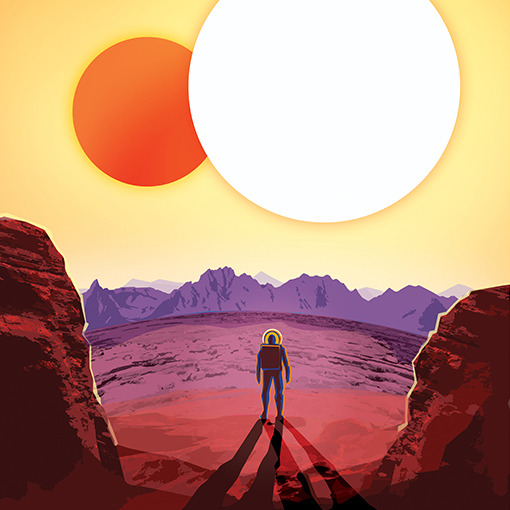
But what about another Earth?
Our first exoplanet mission**, Kepler, launched in 2009 and revolutionized how astronomers understand the universe and our place in it. Kepler was built to answer the question—how many habitable planets exist in our galaxy?

And it delivered: Thousands of planet discoveries poured in, providing statistical proof that one in five sun-like stars (yellow, main-sequence G type) harbor Earth-sized planets orbiting in their habitable zones– where it’s possible liquid water could exist on their surface.

Now, our other missions like the Hubble and Spitzer space telescopes point at promising planetary systems (TRAPPIST-1) to figure out whether they are suitable for life as we know it.

Does life exist elsewhere in the universe?
Now that exoplanet-hunting is a mainstream part of astronomy, the race is on to build instruments that can find more and more planets, especially worlds that could be like our own.

Our Transiting Exoplanet Survey Satellite (TESS), set for launch in 2017-2018, will look for super-Earth and Earth-sized planets around stars much closer to home. TESS will find new planets the same way Kepler does—via the transit method—but will cover 400 times the sky area.
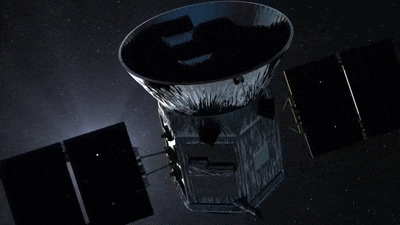
The James Webb Space Telescope, to launch in 2018, wil be our most powerful space telescope to date. Webb will use its spectrograph to look at exoplanet atmospheres, searching for signs of life.

We still don’t know where or which planets are in the habitable zones of the nearest stars to Earth. Searching out our nearest potentially habitable neighbors will be the next chapter in this unfolding story.

*The first true discovery of extrasolar planets was actually a triplet of dead worlds orbiting the remains of an exploded star, called a pulsar star. Two of three were found by Dr. Alexander Wolszczan in 1992– a full three years before Dimidium’s discovery. But because they are so strange, and can’t support life as we know it, most scientists would reserve the “first” designation for a planet orbiting a normal star.
** The French CoRoT mission, launched in 2006, was the first dedicated exoplanet space mission. It has contributed dozens of confirmed exoplanets to the ranks and boasts a roster of some of the most well-studied planets outside our solar system.
To stay up-to-date on our latest exoplanet discoveries, visit: https://exoplanets.nasa.gov
Make sure to follow us on Tumblr for your regular dose of space: http://nasa.tumblr.com
2K notes
·
View notes
Text
Studying Circadian Rhythms and Sleep in Space
Do you remember the last time you stayed awake all night? Maybe you had a major exam, or flew across the ocean. How did you feel the following day? The time at which you would normally feel sleepy was probably different from usual. Your eyes “told” you that it was day, time for work or school. Your brain or muscles disagreed. They “told” you that it was middle of the night, and that you should sleep.

Changing when you sleep, or being in areas where daytime and nighttime are “off-schedule”, affects your circadian rhythm. The circadian rhythm exists in humans as a roughly 24-hour clock that prompts us to sleep or wake.

The European Space Agency’s experiment, Circadian Rhythms, investigates the role of this “biological clock” and its changes during spaceflight. Researchers hypothesize that a non-24-hour cycle of light and dark affects crew members’ circadian rhythms. Understanding the effects of life in space on astronauts’ circadian rhythms may help improve performance and health for future crew members.
Researchers collect data on astronaut’s circadian rhythms by using a “double-sensor,” which measures the temperature at the core of the body. The crew attaches one sensor to their head, and the other to their chest.

Based on results from this research, future crew members could more accurately adjust their sleep, work and physical activity scheduled to accommodate natural circadian cycles, which could improve productivity and health.
Make sure to follow us on Tumblr for your regular dose of space: http://nasa.tumblr.com
1K notes
·
View notes
Text
Solar System: Things to Know This Week
From the people who work for us, to ESA’s ExoMars, to phases of the moon, learn more about the solar system.
1. NASA Is More Than Astronauts

Our employees engage in a very wide range of work, and they come from a variety of backgrounds. To meet some of them and learn how they came to work for us, follow the #NASAProud tag on social media.
+ Learn about job opportunities and why NASA employees love working there + Get to know the people who explore the solar system
2. ExoMars Is Cleared for Landing

A joint project between the European Space Agency and Russia’s Roscosmos space agency, ExoMars 2016 will enter orbit around the Red Planet on Oct. 19. The mission includes the Trace Gas Orbiter (TGO) and the Schiaparelli entry, descent and landing demonstrator. TGO will make a detailed inventory of Mars’ atmospheric gases, looking especially for rare gases like methane to help determine whether that methane stems from a geological or biological source. The orbiter also carries a pair of transmitters provided by NASA. The Schiaparelli lander separated from TGO on Oct. 16, entering the atmosphere for a six-minute descent to a region in Meridiani Planum, not far from NASA’s Opportunity rover. Schiaparelli will test landing technologies in preparation for future missions, including a heatshield, parachute, propulsion system and a crushable structure.
+ Go along for the ride
3. This Just in From Jupiter

Mission managers for our Juno mission to Jupiter have decided to postpone the burn of its main rocket motor originally scheduled for Oct. 19. Engineers want to carefully examine telemetry from a pair of sticky helium valves before the maneuver, which will reduce the time it takes Juno to orbit Jupiter from about 53 days to 14 days. The next opportunity for the burn would be during its close flyby of Jupiter on Dec. 11. Meanwhile, the spacecraft is still gathering data about Jupiter, and Juno will still swing close by the giant planet on Oct. 19.
+ Read more
4. It’s Just a Phase

The moon was full on Oct. 16. This month’s full moon is sometimes called the Harvest Moon or Hunter’s Moon.
+ See a video showing all of this year’s lunar + Learn what causes the moon’s phases
5. Free to Ride

Did you know that NASA offers several other fascinating (and free) online experiences, all based on actual data from real missions. Here are a few to explore:
+ Mars Trek + Vesta Trek + Lunaserv Global Explorer + Deep Space Network (DSN) Now + Spacecraft 3D app
Discover the full list of 10 things to know about our solar system this week HERE.
Make sure to follow us on Tumblr for your regular dose of space: http://nasa.tumblr.com
1K notes
·
View notes
Text
Living and Working Aboard Station
Join us on Facebook Live for a conversation with astronaut Kate Rubins and the director of the National Institutes for Health on Tuesday, October 18 at 11:15 a.m. ET.
Astronaut Kate Rubins has conducted out of this world research aboard Earth’s only orbiting laboratory. During her time aboard the International Space Station, she became the first person to sequence DNA in space. On Tuesday, she’ll be live on Facebook with National Institute of Health director Francis Collins, who led the effort to map the human genome. You can submit questions for Kate using the hashtag #SpaceChat on Twitter, or during the live event. Here’s a primer on the science this PhD astronaut has been conducting to help inspire your questions:

Kate has a background in genomics (a branch of molecular genetics that deals with the study of genomes,specifically the identification and sequencing of their constituent genes and the application of this knowledge in medicine, pharmacy,agriculture, and other fields). When she began her tenure on the station, zero base pairs of DNA had been sequenced in space. Within just a few weeks, she and the Biomolecule Sequencer team had sequenced their one billionth base of DNA aboard the orbital platform.
“I [have a] genomics background, [so] I get really excited about that kind of stuff,” Rubins said in a downlink shortly after reaching the one billion base pairs sequenced goal.
Learn more about this achievement:
+First DNA Sequencing in Space a Game Changer
+Science in Short: One Billion Base Pairs Sequenced
Why is DNA Sequencing in Space a Big Deal?
A space-based DNA sequencer could identify microbes, diagnose diseases and understand crew member health, and potentially help detect DNA-based life elsewhere in the solar system.
+Why Sequencing DNA in Space is a Big Deal
https://youtu.be/1N0qm8HcFRI
Miss the Reddit AMA on the subject? Here’s a transcript:
+NASA AMA: We just sequenced DNA in space for the first time. Ask us anything!
NASA and Its Partnerships

We’re not doing this alone. Just like the DNA sequencing was a collaborative project with industry, so is the Eli Lilly Hard to Wet Surfaces investigation, which is a partnership between CASIS and Eli Lilly Co. In this experiment aboard the station, astronauts will study how certain materials used in the pharmaceutical industry dissolve in water while in microgravity. Results from this investigation could help improve the design of tablets that dissolve in the body to deliver drugs, thereby improving drug design for medicines used in space and on Earth. Learn more about what we and our partners are doing:
+Eli Lilly Hard to Wet Surfaces – been happening the last week and a half or so
Researchers to Test How Solids Dissolve in Space to Design Better Tablets and Pills on Earth
With our colleagues at the Stanford University School of Medicine, we’re also investigating the effects of spaceflight on stem cell-derived heart cells, specifically how heart muscle tissue, contracts, grows and changes in microgravity and how those changes vary between subjects. Understanding how heart muscle cells change in space improves efforts for studying disease, screening drugs and conducting cell replacement therapy for future space missions. Learn more:
+Heart Cells
+Weekly Recap From the Expedition Lead Scientist for Aug. 18, 2016
It’s Not Just Medicine

Kate and her crew mates have also worked on the combustion experiments.
Kate has also worked on the Bigelow Expandable Activity Module (BEAM), an experimental expandable capsule that docks with the station. As we work on our Journey to Mars, future space habitats are a necessity. BEAM, designed for Mars or other destinations, is a lightweight and relatively simple to construct solution. Kate has recently examined BEAM, currently attached to the station, to take measurements and install sensors.

Kate recently performed a harvest of the Plant RNA Regulation experiment, by removing seed cassettes and stowing them in cold stowage.

The Plant RNA Regulation investigation studies the first steps of gene expression involved in development of roots and shoots. Scientists expect to find new molecules that play a role in how plants adapt and respond to the microgravity environment of space, which provides new insight into growing plants for food and oxygen supplies on long-duration missions. Read more about the experiment:
+Plant RNA Harvest
NASA Astronaut Kate Rubins is participating in several investigations examining changes in her body as a result of living in space. Some of these changes are similar to issues experienced by our elderly on Earth; for example, bone loss (osteoporosis), cardiovascular deconditioning, immune dysfunction, and muscle atrophy. Understanding these changes and how to prevent them in astronauts off the Earth may help improve health for all of us on the Earth. In additional, the crew aboard station is also working on more generalized studies of aging.
+ Study of the effects of aging on C. elegans, a model organism for a range of biological studies.
1K notes
·
View notes
Text
10 Times More Galaxies!
The universe suddenly looks a lot more crowded…
We already estimated that there were about 100 billion galaxies in the observable universe, but new research shows that this estimate is at least 10 times too low!

First, what is the observable universe? Well, it is the most distant part of the universe we can see from Earth because, in theory, the light from these objects have had time to reach Earth.

In a new study using surveys taken by the Hubble Space Telescope and other observatories, astronomers came to the surprising conclusion that there are at least 10 times more galaxies in the observable universe than previously thought. This places the universe’s estimated population at, minimally, 2 trillion galaxies!

The results have clear implications for galaxy formation, and also helps shed light on an ancient astronomical paradox – why is the sky dark at night?
Most of these newly discovered galaxies were relatively small and faint, with masses similar to those of the satellite galaxies surrounding the Milky Way.

Using deep-space images from the Hubble Space Telescope and other observatories, astronomers converted the images into 3-D, in order to make accurate measurements of the number of galaxies at different epochs in the universe’s history.
In addition, they used new mathematical models, which allowed them to infer the existence of galaxies that the current generation of telescopes cannot observe. This led to the surprising conclusion that in order for the numbers of galaxies we now see and their masses to add up, there must be a further 90% of galaxies in the observable universe that are too faint and too far away to be seen with present-day telescopes.

The myriad small faint galaxies from the early universe merged over time into the larger galaxies we can now observe.
That means that over 90% of the galaxies in the universe have yet to be studied! In the near future, the James Webb Space Telescope will be able to study these ultra-faint galaxies and give us more information about their existence.

So back to the question…Why is the sky dark at night if the universe contains an infinity of stars? Researchers came to the conclusion that indeed there actually is such an abundance of galaxies that, in principle, every patch in the sky contains part of a galaxy.
However, starlight from the galaxies is invisible to the human eye and most modern telescopes due to other known factors that reduce visible and ultraviolet light in the universe. Those factors are the reddening of light due to the expansion of space, the universe’s dynamic nature, and the absorption of light by intergalactic dust and gas. All combined, this keeps the night sky dark to our vision.
Make sure to follow us on Tumblr for your regular dose of space: http://nasa.tumblr.com
2K notes
·
View notes
Photo
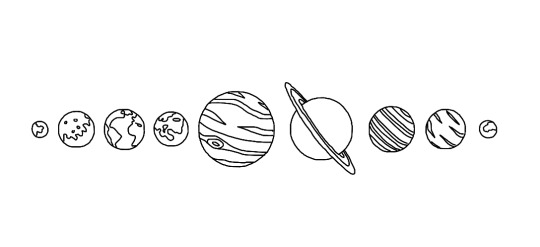
tattoo commission for @just-me-and-my-guitar- !
24K notes
·
View notes
Quote
My love for science doesn’t preclude my faith. For me, science is another language we use to talk about the same miracles faith talks about.
Kala Dandekar (via queenlydias)
296 notes
·
View notes
Text
Reblog if you ARE a woman in STEM, SUPPORT women in STEM, or ARE STILL BITTER about Rosalind Franklin not getting credit for discovering the structure of DNA and the Nobel prize going to Watson and Crick instead.
235K notes
·
View notes
